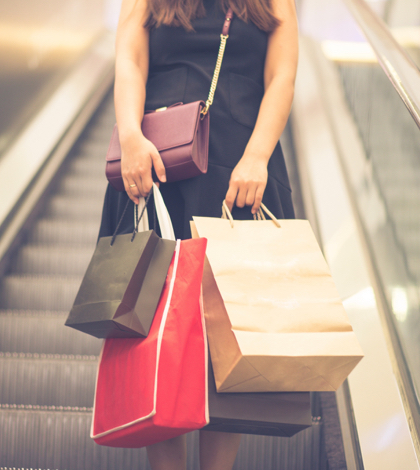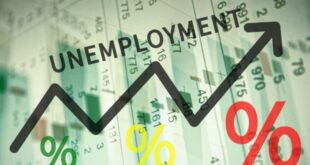Experts are predicting sales to be up more than three percent compared with 2015, which is considered good but not outstanding. More disposable income and a stronger economy, along with the end of the election season, means things could turn out better than expected.
It’s becoming a familiar theme this time of year, as U.S. retailers prepare for the Christmas shopping season, a time of year that is make-or-break for many of them.
Yes, this will be a solid season for retail sales, but it’s not likely to set any records. Certainly it won’t be similar to the glory days of the mid-2000s, when yearly holiday sales rose anywhere from five to seven percent a year.
The International Council of Shopping Centers in New York is predicting a 3.3 percent increase in sales compared with last year, with the average consumer spending $683.90.
That would be an improvement compared with the 2.2 percent increase U.S. retailers experienced last year, but it wouldn’t be a cause for celebration. Based on several factors, including population growth, most retailers expect a minimum three percent sales increase during the holidays.
The National Retail Federation in Washington, D.C. isn’t much more encouraging.
In early October, it predicted a 3.6 percent jump in Christmas sales compared with 2015, and last week it expanded on that prediction, saying the average consumer plans to spend $935.58 this year, be it for Christmas, Hanukkah or Kwanza. That figure includes gifts, decorations, greetings cards and food, according to the federation.
If the adage about the Christmas season reflecting the overall economy, then 2016 should be a good year. Unemployment is down, disposable income is up, gasoline prices are relatively stable and consumer confidence in September rose to its highest level in nine years.
Also, hiring to fill temporary positions during the holiday season was strong this year. Nationwide, U.S. retailers are expected to add about 750,000 jobs in 2016 about the same as last year but a decline of roughly 30,000 from three years ago, according to Chicago-based Challenger, Gray & Christmas, a Chicago-based outplacement service.
“I agree that it’s going to be a good year but probably not much more than that,” said Chris Thornberg, director of UC Riverside’s Center for Economic Forecasting and Development. “Probably the strongest things are that consumer spending is up and people’s incomes are growing, and that usually adds up to more spending at Christmas. But I don’t expect to get quite to the level of spending we got to last year.”
One thing that could work in the retail industry’s favor is the end of the election season, which has been even more amped up and intrusive than past presidential election years, said Matthew Shay, the federation’s president and chief executive officer.
“Everywhere you turn — whether you’re picking up a newspaper or watching television — political advertisements are taking up ad space that retailers typically use to get holiday shopping on the minds of consumers across the country,” Shay said in a statement that accompanied the federation’s forecast.
“Once the election has passed, we anticipate consumers will pull themselves out of the election doldrums and into the holiday spirit.”
Shay cited a “flash poll” the federation conducted earlier this month, in which more than 25 percent of those surveyed said the election will impact their holiday spending. Forty three percent say they are spending less because of the uncertainty of the election, although nearly 90 percent said they would spend an extra $25 this holiday season if they came across a good sale or promotion, an ideal gift or a discount on shipping costs.
U.S. retailers should expect a “rush of consumers” after the election season ends, Shay said in the statement.
Maybe so, said Jay Prag, professor of economics and finance at the Drucker School of Management at Claremont Graduate University.
“The candidate who is probably going to win is more likely to raise taxes, and I think that could be causing some anxiety,” Prag said in reference to Democratic presidential nominee Hillary Clinton. “I don’t expect it to be a blowout year, I just expect it to be a good year. There’s a lot of anxiety about job security, and that means people are reluctant to run up their credit cards.
Online shopping will continue to grow this year, and 2016 will be a year of deep discounts and sales, like the last few years have been, Prag said.
This could also be a year that two of the county’s oldest and best-known retailers – Macy’s and JC Penney – begin to make major shifts in their market strategies.
“Macy’s is moving more of their inventory to online, which is a good move for them,” Prag said. “They aren’t trying to fight the move toward online shopping, they’re trying to join it, which is smart. And JC Penney is moving toward appliances. They’re trying to move into a niche that Sears is leaving behind.”
JC Penney will definitely be a factor at one Inland shopping center this holiday season: the chain opened a store Oct. 19 at Inland Center Mall in San Bernardino, much to the delight of Terri Relf, the mall’s senior marketing manager.
“We always expect to have a good Christmas season, and with JC Penney open we expect this one to be even better,” Relf said. “We had 1,500 people for the opening, which is by far the biggest opening we’ve ever had.”
Relf, who has worked at Inland Center for more than 20 years, said she doesn’t believe the election is changing shopping patterns that much and that online shopping, while growing in popularity every year, isn’t going to put brick-and-mortar retail out of business anytime soon.
“There are a lot of people who like to see and touch things before they buy them, who still like to have that experience,” Relf said. “That’s one of the reasons I think we’re going to have a good Christmas. We’ve had a good year, and with a new anchor tenant, there’s no way we’re not to do better than we did last year.”
 IE Business Daily Business news for the Inland Empire.
IE Business Daily Business news for the Inland Empire.


